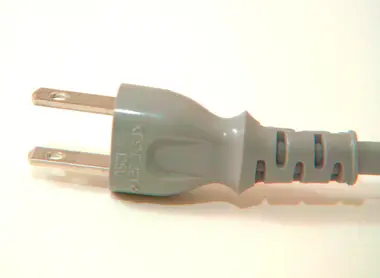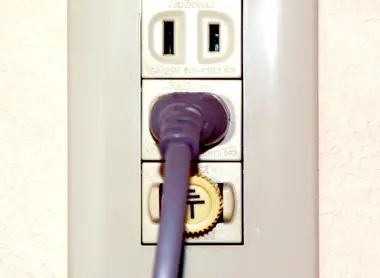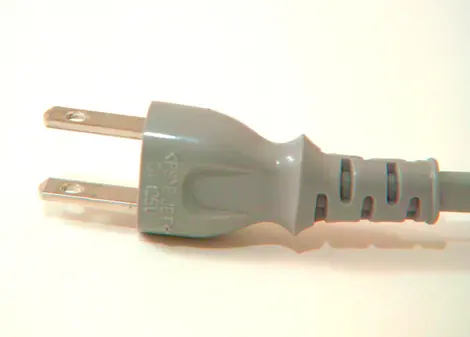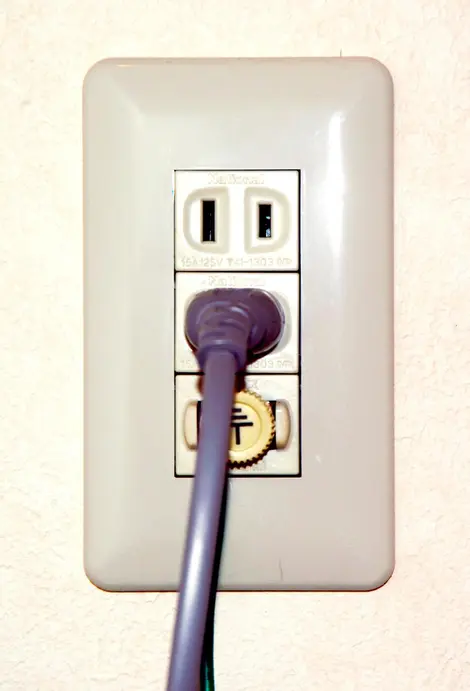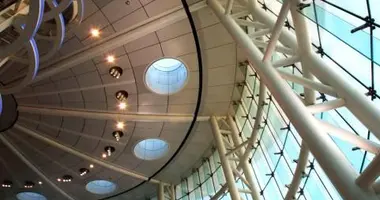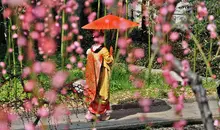Electricity in Japan
- Published on : 07/05/2024
- by : La rédaction
- Youtube
Electricity in Japan has unique characteristics that set it apart from many other countries. Influenced by its island geography, its industrial history and deeply marked by the Fukushima nuclear accident in 2011, Japan's electricity system is a special case on a global scale. Between its different-frequency networks, its fast-changing energy mix and its technical peculiarities, understanding electricity in Japan is essential for any traveler to the country. Let's take a look at the specifics of the Japanese electrical system, its recent transformations and the practical information you need to use your electrical appliances during your stay in the archipelago.
Features and characteristics of the Japanese power system
The Japanese electricity system has several remarkable technical features that set it apart from other industrialized countries. Perhaps the most surprising is the division of the grid into two zones with different frequencies: eastern Japan (including Tokyo) operates on a 50 Hz frequency, while the west (including Osaka and Kyoto) uses 60 Hz. This situation dates back to the end of the 19th century, when Tokyo bought its first electric generators from the German company AEG (50 Hz) in 1895, while Osaka bought its first generators from the American company General Electric (60 Hz) in 1896.
This division of the electricity network had major consequences for the interconnection of national grids. The two zones are linked by just four converter stations, with a capacity limited to around 1.2 GW. This technical constraint was particularly problematic during the 2011 earthquake and after the Fukushima accident, preventing the efficient transfer of electricity between regions and causing blackouts due to saturated converters. Projects are underway to increase this interconnection capacity, notably via the Higashi-Shimizu frequency converter project, which aims to increase transferable power from 1.2 to 3 GW.
Another major specificity is the complete isolation of the Japanese power grid from the rest of the world. Unlike other countries, which can rely on electricity imports when needed, Japan, as an archipelago, has no interconnections with other countries. This situation increases its vulnerability to production shortages and fluctuations, particularly since the drastic reduction in its nuclear fleet.
Japan's energy mix and its evolution since Fukushima
The Fukushima nuclear accident in March 2011 profoundly changed Japan's energy landscape. Prior to the disaster, Japan generated around 30% of its electricity from 54 nuclear reactors, making it the world's 3rd largest nuclear power producer. The country was even planning to increase this share to 50% to reduce its dependence on imported fossil fuels and its CO2 emissions.
Following the accident, the Japanese government decided to phase out its entire nuclear fleet. From May 2012, Japan found itself, for the first time since 1970, without any nuclear power generation. This considerable energy vacuum had to be quickly filled, mainly by massive reliance on fossil-fuel power plants.
Fossil fuel-based power generation rose by 34% between 2010 and 2012, with a spectacular increase in the use of fuel oil (+96.4%) and natural gas (+30.5%). This forced transition to fossil fuels has had several major consequences: an explosion in liquefied natural gas (LNG) imports, making Japan the world's biggest buyer and causing international prices to soar; a considerable increase in CO2 emissions; and a historic trade deficit for this traditionally exporting country.
At the same time, the crisis stimulated the development of renewable energies. Electricity generation from solar power, which was practically negligible in 2010 (0.3% of production), has experienced lightning growth, reaching 9.9% by 2023. Renewable energies as a whole now account for 25.3% of Japanese electricity production, compared with just 9.7% in 2010.
Technical particularities: voltage, frequency and electrical outlets
When traveling in Japan, there are several technical features of the Japanese electrical system that deserve your attention. The first concerns voltage: electric current in Japan is 100 volts, significantly lower than the 230 volts used in France and most European countries. This difference can affect the operation of your electrical appliances.
Concerning frequency, as mentioned above, Japan is divided into two zones: the east (Tokyo, Yokohama, Tohoku, Hokkaido) operates at 50 Hz, as in Europe, while the west (Nagoya, Osaka, Kyoto, Hiroshima) uses 60 Hz, as in North America. This historical division of the network can affect certain frequency-sensitive devices, although most modern equipment is compatible with both frequencies.
For electrical outlets, Japan uses mainly type A and B plugs. Type A sockets have two parallel flat plugs, similar to those used in the USA. Type B plugs also include a U-shaped ground pin. These formats differ considerably from the French E-type plugs, with their round plugs and ground pin.
For travelers coming from France or Europe, it will be necessary to use an adapter to plug in your appliances. Most modern electronic devices (smartphones, tablets, laptops, digital cameras) operate within a voltage range of 100-240V and are compatible with 50/60Hz frequencies, as indicated on their charger. For these devices, a simple plug adapter will suffice, without the need for a voltage transformer.
Electricity infrastructure and distribution in Japan
Japan's electricity network has a particular structure inherited from its history. Historically, the sector was organized around ten vertically integrated regional monopolies, each responsible for the generation, transmission, distribution and sale of electricity in its area. This organization persisted until recently, with companies such as TEPCO (Tokyo Electric Power Company) for the Tokyo region and Kansai Electric for the Osaka region.
Since the Fukushima accident, Japan has undertaken a major reform of its electricity market, including three main steps: the creation in 2015 of a national electricity grid management entity (OCCTO - Organization for Cross-regional Coordination of Transmission Operators), the complete liberalization of the retail market in April 2016, enabling consumers to choose their electricity supplier, and finally the legal separation of generation, transmission and distribution activities in 2020.
The aim of this reform is to introduce more competition into the sector, improve the interconnection of regional networks, and facilitate the integration of renewable energies. Nevertheless, the physical constraints of the network, notably its division into zones of different frequencies and limited interconnection capacities, continue to pose major challenges.
To cope with variations in demand and compensate for the intermittency of renewable energies, Japan relies heavily on pumped-storage power plants, which store energy in the form of water pumped into high reservoirs. With a storage capacity of around 27.5 GW, Japan has the second-largest pumped-storage fleet in the world, after China.
Electricity for travelers: adapters and precautions
For travelers to Japan, the question of electrical appliance compatibility is essential. If you're coming from France or Europe, you'll need an adapter to plug your appliances into Japanese sockets. Sockets in Japan are type A (two parallel flat plugs) or sometimes type B (with a third ground pin), unlike European type E or F sockets with round plugs.
Before you leave, always check the voltage range supported by your devices, usually indicated on the charger or the device itself. Most modern electronic devices (smartphones, tablets, laptops, cameras) operate in the 100-240V range, and are compatible with 50/60Hz frequencies. For these devices, a simple plug adapter will suffice.
On the other hand, for more specific, energy-hungry appliances such as hair dryers, irons or kitchen appliances designed only for 220-240V, an adapter alone won't suffice. You'll need a voltage transformer to lower the Japanese voltage from 100V to 230V. Note that some frequency-sensitive appliances may also encounter problems, especially in parts of Japan using 60 Hz if your appliances are designed for 50 Hz.
You can buy adapters before you leave in electronics, DIY or travel stores, or order them online. In Japan, you'll find adapters at international airports like Narita, at major electronics retailers like Bic Camera or Yodobashi Camera, in specialized neighborhoods like Akihabara, or even in 100-yen shops. Many hotels also offer adapters to their guests on request.
The development of renewable energies in Japan
Since the Fukushima accident, Japan has considerably accelerated the development of renewable energies. This transition has been supported by the introduction in 2012 of a generous Feed-in Tariff system, which is particularly advantageous for solar energy. As a result, installed renewable energy capacity has grown at an average rate of 29% per year since 2012.
Solar photovoltaic energy has seen the most spectacular growth. Japan now ranks 4th in the world for solar power generation, with 97 TWh produced by 2023, representing 9.9% of its total electricity production, compared with just 0.3% in 2010. With over 87 GW of installed capacity, the country ranks 3rd worldwide behind China and the United States.
Other renewable energies are also progressing, albeit more slowly. Hydropower remains the second most important renewable energy source, accounting for 8.8% of electricity production in 2023. Biomass and renewable waste contribute 3.6%, while wind power still only accounts for 1.1% of production.
The development of renewable energies in Japan faces several specific challenges. The lack of available space in this densely populated country limits the installation of large-scale solar power plants or onshore wind farms. To overcome this constraint, Japan is developing innovative solutions such as floating solar power plants on lakes and floating offshore wind turbines.
The separation of the grid into two zones of different frequencies and limited interconnection capacities also complicate the integration of renewable energies on a large scale. Intermittent energies such as solar and wind power require well-connected grids to balance supply and demand over large geographical areas.
Future prospects for Japan's electricity sector
Japan has defined an ambitious energy strategy for the coming decades, with the aim of achieving carbon neutrality by 2050. In its energy plan to 2030, the Japanese government targets an electricity mix comprising 20-22% nuclear power, 22-24% renewable energies and around 56% fossil fuels (mainly gas and coal).
As far as nuclear power is concerned, the country has opted for a cautious approach of gradually restarting power plants, after they have been brought into line with strict new safety standards set by the Nuclear Regulation Authority (NRA) created after Fukushima. Of the 33 theoretically operable reactors, 17 were given the green light by the NRA, but only 10 were actually in service by 2023, mainly due to local resistance.
In February 2024, the government adjusted its climate targets, now aiming for a 60% reduction in greenhouse gas emissions by 2035 compared with 2013. To achieve this, it wants nuclear power to generate 20% of the country's electricity by 2040 (compared with 9% at present) and the share of renewable energies to reach 40-50% (compared with 22.9% at present).
Hydrogen is also set to play a central role in Japan's energy transition. Japan was one of the first countries to launch a national hydrogen strategy, affirming back in 2017 its desire to become the world's first "hydrogen society". Targets include 800,000 fuel cell vehicles on the road by 2030, more than 5 million residential fuel cells, and the use of hydrogen for large-scale power generation.
To facilitate these transitions, Japan will have to overcome several structural challenges, including improving interconnections between the country's different regions, developing storage solutions to compensate for the intermittency of renewable energies, and modernizing its infrastructure with smart grids. If you're planning a trip to Japan, don't forget to take the necessary adapters with you, and remember to check this point before you leave to make the most of your stay without any electrical worries. A French power strip with a single adapter can be a practical solution for recharging several appliances simultaneously.
